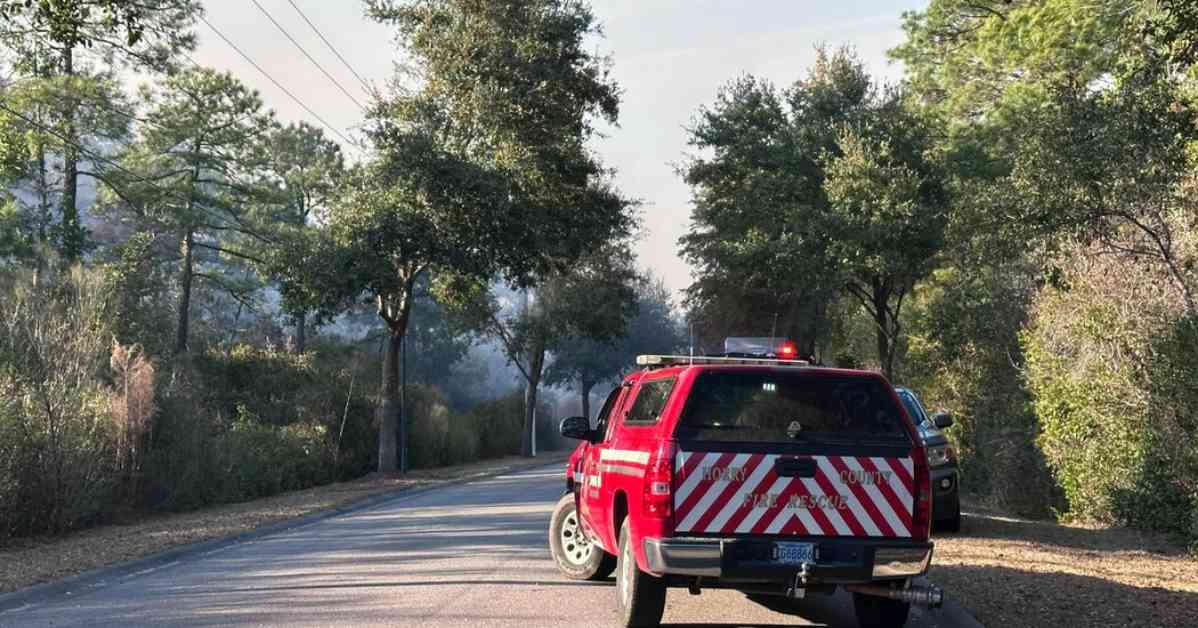Wildfire Chaos in the Carolinas: Residents Forced to Flee
As the sun set on a Saturday in March, residents of North and South Carolina found themselves in the midst of chaos as brush fires fueled by gusty winds and dry conditions spread rapidly, prompting emergency evacuations in several communities. The combination of gusty winds, dry air, and unseasonably high temperatures created the perfect storm for wildfires to break out across the region.
The Mountains Threatened: Tryon and Saluda Under Siege
In the mountains of North Carolina, small communities like Tryon and Saluda, located approximately 40 miles south of Asheville, were on high alert as a brush fire threatened their peaceful existence. Polk County officials reported that multiple fire departments were actively responding to a blaze encroaching on Meadowlark Drive in Tryon, prompting the evacuation of the entire area. With Tryon’s population of about 1,500 and Saluda’s less than 1,000, the threat of the fire loomed large over these close-knit communities.
Meanwhile, in South Carolina, a brush fire along the coast posed a danger to Carolina Forest, located just west of Myrtle Beach. By early Saturday night, authorities reported that the fire was 75 percent contained, thanks to the efforts of the South Carolina Forestry Commission and the Horry County Fire Rescue. Despite the progress, several neighborhoods in Carolina Forest remained under an evacuation order as crews continued to battle the blaze.
Rural Towns on Edge: Six Mile, S.C. Braces for Impact
Further inland, residents of Six Mile, S.C., a rural town approximately 30 miles west of Greenville, were on high alert as another fire broke out in their vicinity. County officials had recommended evacuations along several streets, although as of Saturday evening, no official evacuations had been ordered. The uncertainty of the situation left residents on edge, hoping for the best while preparing for the worst.
The Perfect Storm: Weather Conditions Fueling the Flames
The rapid spread of wildfires in the Carolinas was exacerbated by a combination of factors, including gusty winds, dry air, and unseasonably high temperatures. The entire southeastern United States was under a red-flag warning issued by the National Weather Service, indicating an elevated risk of fires due to the weather conditions. The lack of rainfall in South Carolina during February left vegetation dry and susceptible to ignition, with Myrtle Beach receiving only 2.30 inches of rain since the beginning of the year, well below the normal average of 6.30 inches for this time of year. While North Carolina fared slightly better in terms of rainfall, it still fell below the average for the month.
As the fires continued to rage, residents and emergency responders alike hoped for a change in the weather that would help contain the flames. With winds expected to ease overnight, the red-flag warnings were set to expire at 10 p.m. on Saturday, offering a glimmer of hope in an otherwise dire situation.
In times of crisis, the resilience and strength of communities are put to the test, as neighbors come together to support one another in the face of adversity. As the wildfires in the Carolinas continued to threaten homes and livelihoods, residents remained vigilant, ready to evacuate at a moment’s notice if the situation worsened. The bravery and dedication of firefighters and emergency responders on the front lines of these blazes were a testament to their unwavering commitment to protecting the lives and property of those in harm’s way.
Claire Fahy’s contributions to this report shed light on the ongoing efforts to combat the wildfires and keep residents safe in the face of uncertainty.

